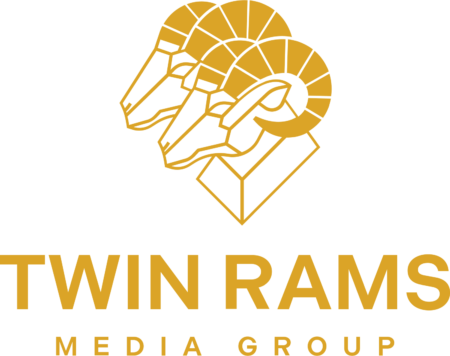Have you ever wondered how the media and the general public see your brand? Have you ever encountered setbacks and negative conversations regarding your brand online? This is where public relations comes in. Different types of public relations can help businesses and organizations handle their brand image in various situations. The right PR strategy can also help these businesses and organizations grow and maintain a good reputation in the long run. So what is PR?
What is PR and why is it important?
PR simply stands for “public relations”. This is the practice of managing communication between a company or organization and its target audience, to build and maintain a positive public image and reputation or responding to public conversations.
Public relations encompasses various activities and strategies, such as media relations, community relations, crisis management, social media management, internal communications, and more.
It is because of this that public relations is crucial for a lot of brands. PR helps build the public image and contribute to conversations among the public and digital spaces. Here are a few reasons why PR is important:
- Building trust and credibility
- Managing reputation
- Increasing visibility and awareness
- Driving business goals
- Managing relationships
- Crisis management
- Driving change and influence
#1 Building Trust and Credibility
Public relations helps organizations establish trust and credibility with their audience. This can be done by effectively communicating their values, objectives, and achievements. Positive media coverage, endorsements, and testimonials from customers and clients can enhance the brand’s or organization’s reputation.
#2 Managing Reputation
Public relations plays a crucial role in managing and protecting a brand’s reputation during both good times and crises. Through strategic communication efforts, PR professionals can mitigate negative publicity, address controversies, and maintain public trust amid positive conversations.
#3 Increasing Visibility and Awareness
Public relations activities such as media relations, press releases, events, and social media engagement help increase the visibility and awareness of a company, its products, services, and initiatives among the target audience. This can be very beneficial when it comes to product launches, specific campaigns, sales and promotions, and more.
#4 Driving Business Goals
Effective PR strategies align with an organization’s business objectives and contribute to achieving them. Whether it’s about increasing sales, attracting investors, recruiting top talent, or fostering partnerships, public relations can help support these goals through positive communication and reputation management.
#5 Managing Relationships
PR involves nurturing relationships with various stakeholders in a company or organization. This includes customers, employees, investors, media, government agencies, and the brand’s community. By fostering strong relationships and engaging with these various groups effectively, companies can enhance their reputation and achieve their objectives.
#6 Crisis Management
In times of crisis, negative publicity, or particular setbacks in operations, PR professionals play a critical role in managing communication. They provide accurate information and protect the organization’s reputation in these times. A well-prepared crisis communication plan can help minimize damage and restore public trust in the company.
#7 Driving Change and Influence
Public relations can also be a powerful tool for driving social change, influencing public opinion, and shaping perceptions. By strategically communicating messages that resonate with the target audience, companies, and organizations can inspire action and create a positive impact.
Overall, public relations is essential to effectively communicating a brand’s message to its audience. Whether it be to build and manage their reputation, to placate customers and communities, or to build relationships, public relations can help businesses navigate this complex and digital world.
Types of Public Relations
Since public relations is broad and encompasses different activities and purposes, there are types of public relations that can help create or manage a good public image for any business or professional. Knowing what types of public relations can be utilized by brands and businesses is paramount to every business owner or marketing professional.
Here are the types of public relations:
- Media Relations
- Investor Relations
- Corporate Communications
- Public Affairs
- Social Media Communications
- Community Relations
- Crisis Communications
Media Relations
Media relations involve building relationships with significant people in the media. This includes journalists, reporters, broadcasters, bloggers, influencers, and other media professionals. This is done to secure positive media coverage or endorsements for a company or organization, its products/services, or events. Media relations may involve writing press releases, pitching stories to journalists, arranging interviews, and responding to media inquiries.
Investor Relations
Another one of the important types of public relations is investor relations. Investor relations focuses on managing communication with shareholders, investors, financial analysts, and the general financial community involved in the company or organization. This is to maintain transparency, build investor confidence, and help prospects make informed decisions about whether or not to invest in the company. This type of PR includes preparing financial reports, hosting investor conferences, and responding to investor inquiries.
Corporate Communications
Corporate communications, on the other hand, focus on managing internal and external communications for an organization or a company. Internal communications help build a positive relationship between a company and its employees to increase morale and efficiency. Meanwhile, external communications help build a lasting relationship with customers, suppliers, and the general public to enhance reputation.
Corporate communication includes internal newsletters, employee communications, corporate announcements, town hall meetings, employee engagement initiatives, as well as the organization’s corporate social responsibility initiatives.
Public Affairs
Public affairs focuses on managing communication with government agencies, policymakers, and other political stakeholders to influence public policy and legislation. This includes lobbying, advocacy campaigns, and engaging in government relations activities. Public affairs can be used to build relationships with specific politicians. Large companies and nonprofit organizations may utilize these types of public relations to build their image and build support for their brand.
Social Media Communications
Online spaces like social media can also be included in types of public relations. Social media communications involves managing an organization’s presence on social media platforms to engage with audiences, share content, and build relationships. This type of PR includes creating social media strategies, posting relevant and engaging content, responding to comments, and monitoring social media conversations regarding the brand. This way, a business or organization can insert themselves into online conversations and help maintain their online presence.
Community Relations
Community relations is one of the types of public relations that focuses on the relationship between a business and its locality. This involves engaging with local communities, nonprofit organizations, local government, and other stakeholders to build positive relationships and support community initiatives. This may include sponsoring events, volunteering for causes, and participating in community outreach programs. This will help improve a company’s image and garner the public support and loyalty they need.
Crisis Communications
And of course, crisis communications is another important type of PR. Crisis communication involves managing communication during times of crisis or emergencies to protect the organization’s reputation, reassure the public, and minimize damage. Different company crises may include operational delays, workplace violence, financial crises, natural accidents and emergencies, technological crises, and more.
Crisis communications and management include preparing crisis communication plans, issuing timely statements, and addressing public concerns effectively. A good crisis communication plan will help mediate public worries or negative conversations.
These are just a few examples of the types of public relations activities that companies and organizations may engage in. With these, they can effectively manage and maintain their communication and relationships with various stakeholders.
Tips for an effective PR strategy
While there are different types of public relations and specific PR strategies vary widely, effective PR is possible. This requires planning, clear business objectives, and consistent execution from the company or organization.
Here are a few tips to help you develop a successful PR strategy:
- Define Clear Objectives: Start by identifying specific and measurable goals for your public relations efforts. Whether it’s increasing brand awareness, enhancing reputation, driving sales, or managing a crisis, clearly define what you want to achieve with your PR strategy.
- Know Your Audience: Understand your target audience, including their demographics, interests, preferences, and media consumption habits. It’s better to tailor your messaging and PR activities to resonate with your audience and address their needs and specific concerns in different situations.
- Be Transparent and Authentic: Maintain transparency and authenticity in your communication with the media and the public. It’s better to be honest about your organization’s strengths and weaknesses and address any issues or controversies openly and responsibly.
- Monitor the Media Landscape: Stay informed about media trends, industry news, and conversations relevant to your organization or niche. Monitor traditional media outlets, social media platforms, and online forums to identify opportunities and threats to your reputation.
- Utilize Multiple Channels: Diversify your public relations efforts across multiple channels, including traditional media, social media, blogs, events, and influencer partnerships. Adapt your messaging and tactics to the specific situation, the types of public relations, and the nature of the channels.
- Measure and Evaluate Results: Establish key performance indicators (KPIs) to track the effectiveness of your PR activities. Measure metrics such as media mentions, website traffic, social media engagement, and sentiment analysis to evaluate the impact of your efforts and make data-driven decisions.
Effective PR relies on a careful assessment of your needs and the audience, transparent messaging, and the situation your business is currently in. Of course, continuously investing in training and development for your public relations team is also important.
If you don’t have an in-house PR or marketing team, you can also trust digital marketing and PR companies, such as Twin Rams Media Group, to help you create and maintain your brand image in the modern landscape. Talk to us now and see how we can help you with your PR efforts.
References:
https://blog.hubspot.com/marketing/public-relations-definition#types
https://www.indeed.com/career-advice/finding-a-job/types-public-relations
https://www.forbes.com/sites/forbesagencycouncil/2022/08/18/5-types-of-public-relations-you-need-to-know/?sh=74c59a9a692b


